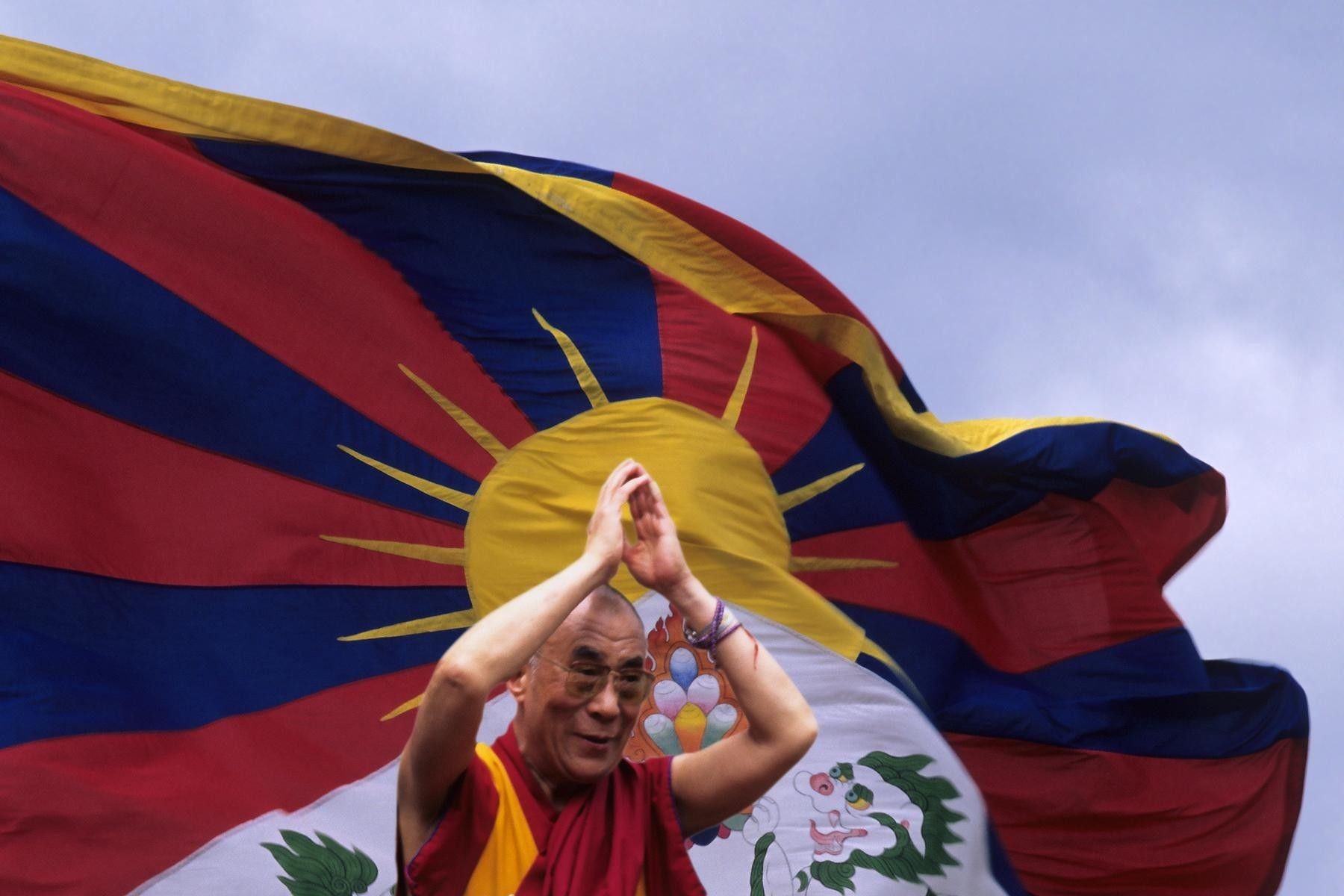
Figure 1. Dalai Lama stands in front of the Tibetan flag of independence. Source: International Campaign for Tibet.
10 March 2023 marked the sixty-fourth anniversary of a pivotal moment in Tibet's history.
Thousands of people from the Kham countryside to the streets of Lhasa mobilized to protest the PRC’s occupation of their homeland in March 1959. China invaded nearly a decade earlier and imposed communist imperialism under the guise of reforming the statelet. The reality was People’s Liberation Army (PLA) troops inflicted cultural erasure, displacement, and violence upon the population. Anger from years of mistreatment finally gave birth to an anti-tyranny movement, spearheaded by vocal Tibetan dissidents tired of occupation. A movement made up of women, men, and children in peaceful protest came to define the uprising that swept across the heart of the country.
Protestors assembled in the streets of Lhasa and demonstrated outside the Dalai Lama’s Summer Palace (the Norbulingka) in support of Tibetan independence. Slogans carried by the chants of thousands of dissidents erupted in common cause of resistance. No matter the status of those protesting, no matter their gender, age, the wording of the message or the pitch of their calls, people came together to demand the freedom of Tibet from Communist Party rule. There was no violence in the protestor’s demands, but the words alone struck a deep blow to Mao’s occupation project. This ripped into the fabric of the state’s narrative of unity and reform in Tibet and dispelled a myth the state wanted to secure.
The Chinese Communist Party had a choice to make.
They could listen to Tibetans in recognizing their independence and the sovereignty of their homeland. This choice would allow for the ability of the Chinese and a reestablished Tibetan state to secure a potential lasting peace as neighbors and friends. Or they could deny self-determination of the Tibetan people and suppress calls for a Free Tibet by force. This was the choice the CCP ultimately pursued.
The state’s decision set in motion a massacre—PLA forces attacked Lhasa with indiscriminate artillery and small-arms fire. Thousands of Tibetan people were killed but the Dalai Lama managed to escape under the cover of darkness to neighboring India, where he continued to help fuel the flame of Tibet’s independence movement.
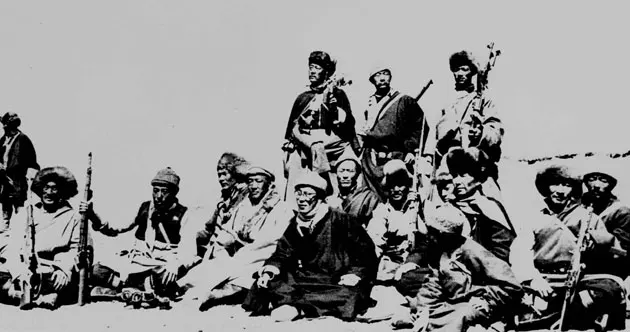 Figure 2. The Dalai Lama, sixth from the left, with members of an escape party during his flight to exile across the Himalayas. March 1959. Source: AP.
Figure 2. The Dalai Lama, sixth from the left, with members of an escape party during his flight to exile across the Himalayas. March 1959. Source: AP.
The fire that those brave people lit during the days of uprising are commemorated in Tibetan National Uprising Day. Every year on March 10th sees millions of Tibetans and their allies come out in protest across all parts of the world to remember the events of Spring 1959. The flag of Tibet that once flew high in Lhasa before 1952 is used to rally people not just in remembrance but in the spirit of resistance. The latter is integral to the modern independence movement that Tibetan people and the Central Tibetan Administration in exile hold dear.
The Oppression has not ended since the uprising.
The Chinese security apparatus in the decades since has permeated across the mainland, increasing in strength and scope. A security surveillance state to enforce the party’s ideology is entrenched across all parts of the country including those occupied parts in Xinjiang and Tibet. Tibetans existing under the Xizang Autonomous Region are subjected to targeted harassment by PLA security forces. They are exploited for cheap labor by the Han Chinese majority. They are denied basic legal and human rights with arbitrary arrests common, cultural centers and places of worship monitored or outright closed. Thousands of Tibetans are suffering simply for existing as is in their rightful homeland.
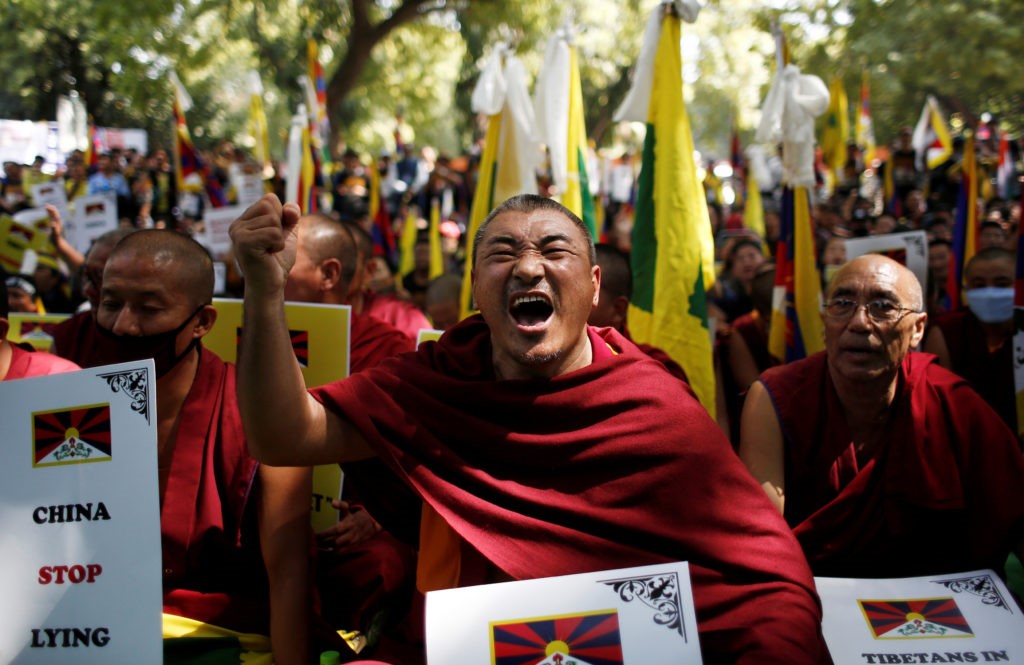 Figure 3. Tibetans shout slogans during a protest in India marking the 60th anniversary of the Tibetan uprising. March 10, 2019. Source: Abidi/Reuters.
Figure 3. Tibetans shout slogans during a protest in India marking the 60th anniversary of the Tibetan uprising. March 10, 2019. Source: Abidi/Reuters.
To be a Tibetan in modern China is an act of resistance. The identity is outlawed in the country not by the laws alone but by the actions of the state itself. Security forces are helping the state erode the freedom of millions by establishing a vast surveillance state that only seeks to discriminate against the country’s minorities and deepen the state’s ideological project. Xi Jinping’s government invests billions into this security state project to facilitate the homogeneity of the Han majority. For Xi Jinping like his predecessors before him, the state is built to secure the longevity of the Han people and not the various ethnicities of the land, which includes Uyghurs and Tibetans. The project is clear in its intent.
Deception is a fundamental part of the erosion of Tibetan identity. The government in Beijing along with its puppet state in Xizang market to the world occupied Tibet’s prosperity. Foreigners are greeted by displays that attest to the importance of Tibetan culture to the region and its prosperity. One might find in tourist campaigns marketed to outsiders the perception that Tibet is free, their cultural identity is celebrated and other elements that give the illusion of autonomy for the minority but make no mistake that this is an act of deception designed by the CCP and the Xi Jinping government to sell to the world the illusion of peace. This peace is a sham that hides a darker reality for millions of people.
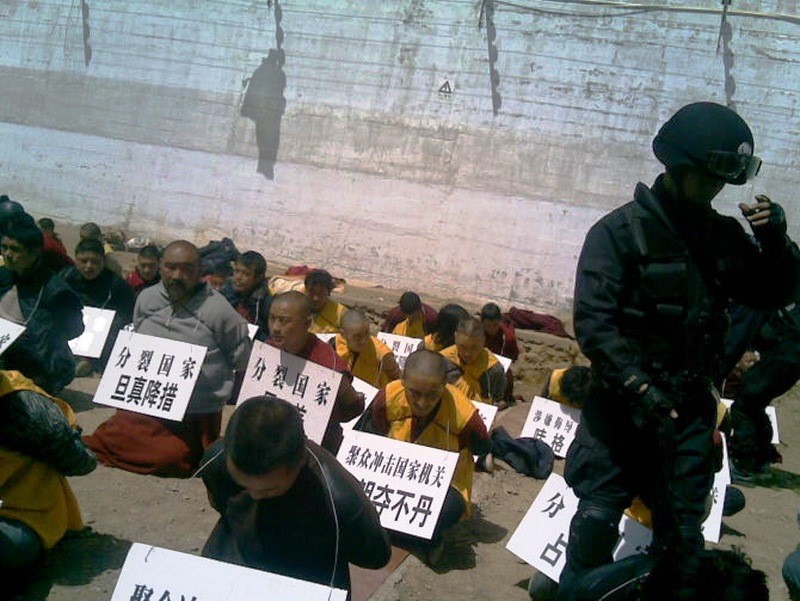 Figure 4. Tibetans arrested by Chinese Security force in 2008. Source: wikimedia commons.
Figure 4. Tibetans arrested by Chinese Security force in 2008. Source: wikimedia commons.
Why does the Tibetan independence movement matter? Why does self-determination, autonomy and resistance still resonate with millions across the globe?
These questions are important to answer for it is their answers that help direct the modern generation into supporting the causes of old. The original generation that championed the Tibetan independence movement and took part in the uprising are passing on. In their absence new blood needs to arise to carry on the cause and remind those that come after of its importance.
Resistance is integral to the human spirit. Resistance is part of daily existence for many different groups of people facing occupation, tyrannical governance, and oppression. Resistance is life. The Kurdish people champion the maxim, “Berxwedan Jiyane” to express the role that resistance plays in their culture and history. For the Tibetan people this is no different. The CCP invaded their homeland. It continues to impose itself against the will of millions of people. The government in Beijing does not want to live in peace with Tibetans. It wants to destroy them. That is the purpose of its imperial project.
Yet, this can only be complete when the identity and memory of the Tibetan people is erased. No matter how much resources, manpower and money the state exhausts, as long as the movement continues to have life through the ideas of millions that come after, the Chinese state can never hope to win. This is why understanding the sacrifices of those that came before, passing on the lessons of the elderly onto the youth and continuing to speak of the importance of a free Tibet is crucial. This is the justice that is owed to not just to the current generation but the older one too. So that they may not die a second time.
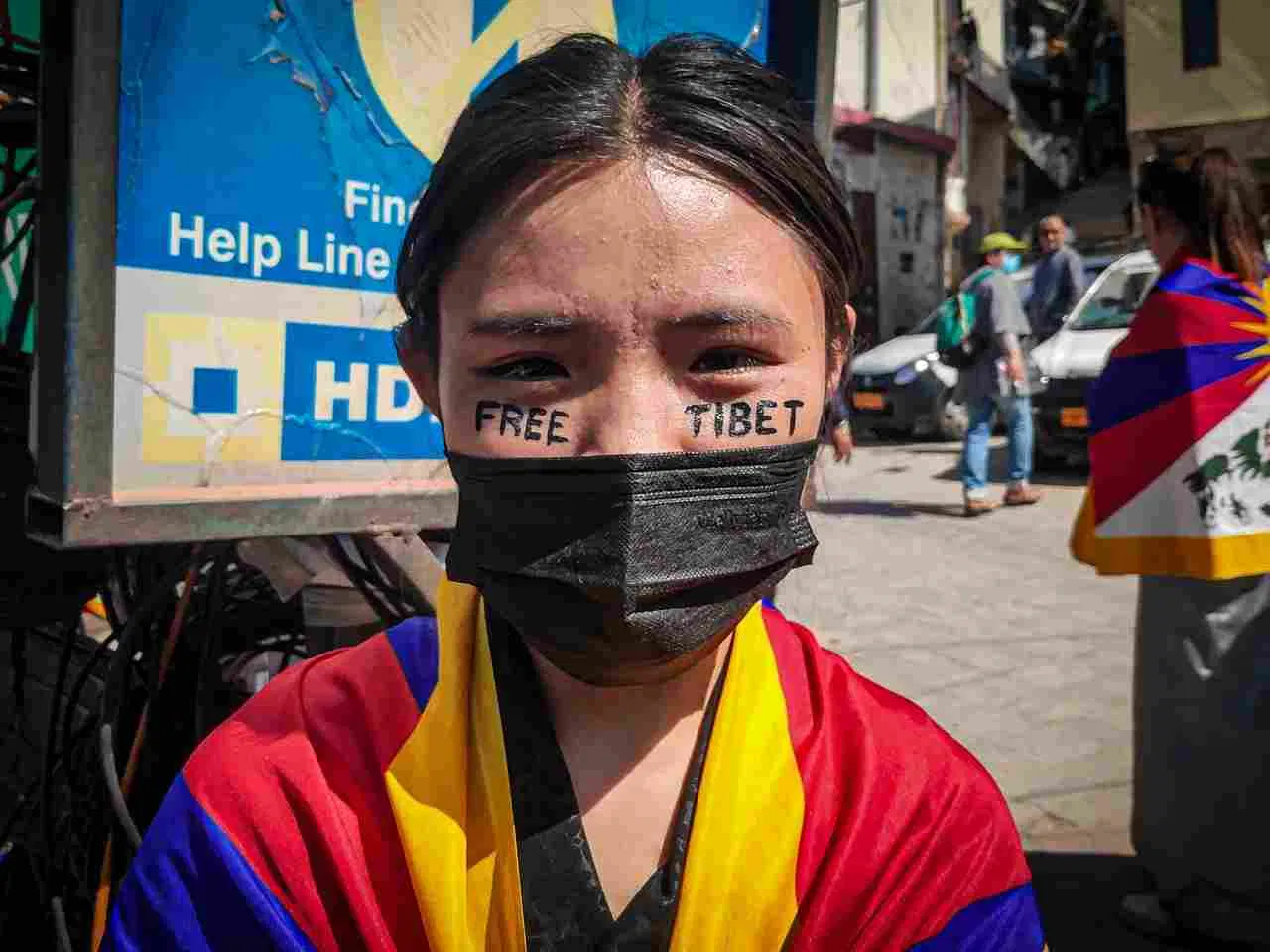 Figure 5. A protester in McLeod Ganj in Himachal Pradesh on March 10, 2022. Source: News Nine.
Figure 5. A protester in McLeod Ganj in Himachal Pradesh on March 10, 2022. Source: News Nine.
Tibet will be free.
This is a reality that I do not doubt. Tibetans are a resilient people that are patient, stoically marching on throughout the years. The very act of protesting that can be seen in Paris, London, Sydney and even in occupied Tibet on each National Uprising Day is a constant reminder to the Chinese Communist Party of their failure to destroy the soul of Tibetan resistance. Nearly several decades might have passed but each year more support builds for Tibetans and their independence movement, while more pressure mounts against the CCP’s imperial project.
International pressure is growing against the CCP. There are more calls from international human rights monitors, foreign governments, INGOs and NGOs now more than ever. The oppression of Tibetans, Uyghurs and other ethnic minorities by the state is no longer an issue relegated to the boundaries of minor activist movements. The state can no longer hide. People are noticing and calling their governments to act in support of Tibetans. The Central Administration of Tibet and its allies are not alone. Tibetans are being heard.
The struggle that comes with resistance is a choice between life and death.
We must choose to resist, so that we may choose to live.
Solidarity with the people of Tibet.
*************************************************************************************
Anthony Avice Du Buisson is an Australian-based freelance writer who writes on politics, foreign policy, and the Middle East with a focus on minority rights. He has written for online syndications such as The Region, The Jerusalem Post and Areo Magazine. Anthony is currently studying a double-degree in a Bachelor of Arts with a Major in Politics and International Relations and a Bachelor of Laws (Honours) at James Cook University in Australia.